Effects of Hot Pressing Temperature and Pressure on Dielectric Properties of Aramid Insulating Paper
Abstract
:1. Introduction
2. Experimental Details
2.1. Preparation of Insulating Paper Samples
2.2. Preparation of Oil-Impregnated Insulating Paper Samples
2.3. Dielectric Constant Test
2.4. AC Breakdown Characteristic Test
3. Results
3.1. Tightness of Paper
3.1.1. Influence of Hot Pressing Temperature
3.1.2. Influence of Hot Pressing Pressure
3.1.3. Influence of Fiber Ratio
3.2. Dielectric Constant
3.2.1. Influence of Hot Pressing Temperature
3.2.2. Influence of Hot Pressing Pressure
3.2.3. Influence of Fiber Ratio
3.3. AC Breakdown Strength
3.3.1. Influence of Hot Pressing Temperature
3.3.2. Influence of Hot Pressing Pressure
3.3.3. Influence of Fiber Ratio
4. Discussion
4.1. Variation of Tightness
4.2. Variation of Dielectric Constant
4.3. Variation of AC Breakdown Strength
5. Conclusions
- (1)
- With the increase in hot pressing temperature and pressure, the tightness of the aramid insulating paper gradually increased, and the increase range was larger, while the overall dielectric constant showed a slight upward trend. The AC breakdown strength of the aramid insulating paper increased continuously with the increase in hot pressing parameters, and then slowed down and stabilized.
- (2)
- During the hot pressing process, the change in the dielectric constant of the aramid insulating paper was jointly affected by the crystallinity of the fibers and the pores in the paper. Hot pressing temperature and pressure had a synergistic effect on the dielectric properties of the insulating paper, and the two had a similar effect on the dielectric properties. Within the parameters studied in this paper, hot pressing temperature had a greater impact on the breakdown strength of the insulating paper.
- (3)
- With the increase in fibrid content, the tightness of the aramid insulating paper increased significantly. The dielectric constant of the aramid paper before and after oil immersion showed an upward trend, and the AC breakdown field strength of the oil-impregnated paper gradually increased.
Author Contributions
Funding
Data Availability Statement
Conflicts of Interest
References
- Shu, Y.; Zhang, W. Research of key technologies for UHV transmission. Proc. CSEE 2007, 27, 1–6. [Google Scholar]
- Lu, Z.; Zhang, M.; Wang, Z.; Wu, Y. Aramid papers and research progress therewith. Insul. Mater. 2006, 39, 21–24. [Google Scholar]
- Wang, S. The production and the applications of PPTA-pulp and PPTA paper in China. Insul. Mater. 2005, 38, 19–22. [Google Scholar]
- Tian, J.; Hu, J. NOMEX paper and its application. Insul. Mater. 1995, 37–39. [Google Scholar]
- Hu, J.; Wang, Y.; Zeng, J.; Huang, Y. Research progress of aramid paper-based composites. China Pap. 2004, 23, 51–54. [Google Scholar]
- Stephanie, L.K.; Wayne, R.S.; Paul, W.M. Process of Making Wholly Aromatic Polyamides. U.S. Patent 3,063,966, 13 November 1962. [Google Scholar]
- Tokarsky, E.W. High Density Para-Aramid Papers. U.S. Patent 4,698,267, 23 April 1986. [Google Scholar]
- Hesler, L.J.; Park, S.C. Aramid Paper Containing Aramid Paper Pulp. U.S. Patent 5,026,456, 18 August 1992. [Google Scholar]
- Lu, Z.; Liu, J.; Zhang, M.; Zhang, S.; Liu, J.; Yang, B. Effects of hot pressing on the surface morphology, structure and physical properties of meta-aramid paper. Pap. Sci. Technol. 2013, 32, 26–30. [Google Scholar]
- Yao, L.R.; Li, X.J.; Jiang, Y.Q.; Xu, S.Q. Influence of hot-pressing temperature on the formation of aramid paper. Therm. Sci. 2017, 22, 144. [Google Scholar]
- Zhao, H.; Zhu, Y.; Sha, L. Study of the relationship between characteristics of aramid fibrids and mechanical property of aramid paper using DSC. e-Polymers 2014, 14, 139–144. [Google Scholar] [CrossRef]
- Li, J.; Zhang, M.; Xiu, H. Effect of hot pressing process on the properties of aramid fiber paper. Pap. Pap. 2007, 26, 30–32. [Google Scholar]
- Yang, B.; Hui, L.; Liu, Q.; Han, X. Effect of hot pressing on the properties of aramid fiber paper. J. Tianjin Univ. Sci. Technol. 2021, 36, 25–29. [Google Scholar]
- He, F.; Zhang, M.; Zhang, S. Effect of Hot Calendering on the Structure of Paper-Based Aramid Fibers. J. Shaanxi Univ. Sci. 2008, 26, 34–37. [Google Scholar]
- Xu, Z.; Cheng, H.; Yu, X.; Li, G. Research on the Dielectric and Conductivity Characteristics of Oil-impregnated Paperboards with Different Oil Absorption Rates. J. Electr. Mach. Control 2015, 19, 82–87. [Google Scholar]
- Downing, J.W., Jr.; Newell, J.A. Characterization of structural changes in thermally enhanced Kevlar-29 fiber. J. Appl. Polym. Sci. 2010, 91, 417–424. [Google Scholar] [CrossRef]
- Liao, R.; Li, X.; Yang, L.; Bai, G. Effect of the Ratios of Aramid Fiber to Pulp on the Properties of Aramid Paper. High Volt. Eng. 2015, 41, 364–373. [Google Scholar]
- Huang, M.; Niu Mi Lv, Y.; Qi, B. Resistance-capacitance Equivalent Model for Broadband Frequency Dielectric Response of Insulation Paper and Polarization Characteristics Extraction of Fiber. High Volt. Eng. 2021, 47, 663–670. [Google Scholar] [CrossRef]
- Zakrevskii, V.A.; Sudar, N.T.; Zaopo, A.; Dubitsky, Y.A. Mechanism of electrical degradation and breakdown of insulating polymers. J. Appl. Phys. 2003, 93, 2135–2139. [Google Scholar] [CrossRef]
- Zhang, S. Study on the Correlation between Aramid Fiber/Pulp Interface and Structure and Paper Properties. Ph.D. Thesis, Shanxi University of Science and Technology, Xi’an, China, 2010. [Google Scholar]
- Huang, J.; Zhou, Y.; Dong, L.; Zhou, R.; Liu, R. Enhancement of mechanical and electrical performances of insulating presspaper by introduction of nanocellulose. Compos. Sci. Technol. 2017, 138, 40–48. [Google Scholar] [CrossRef]
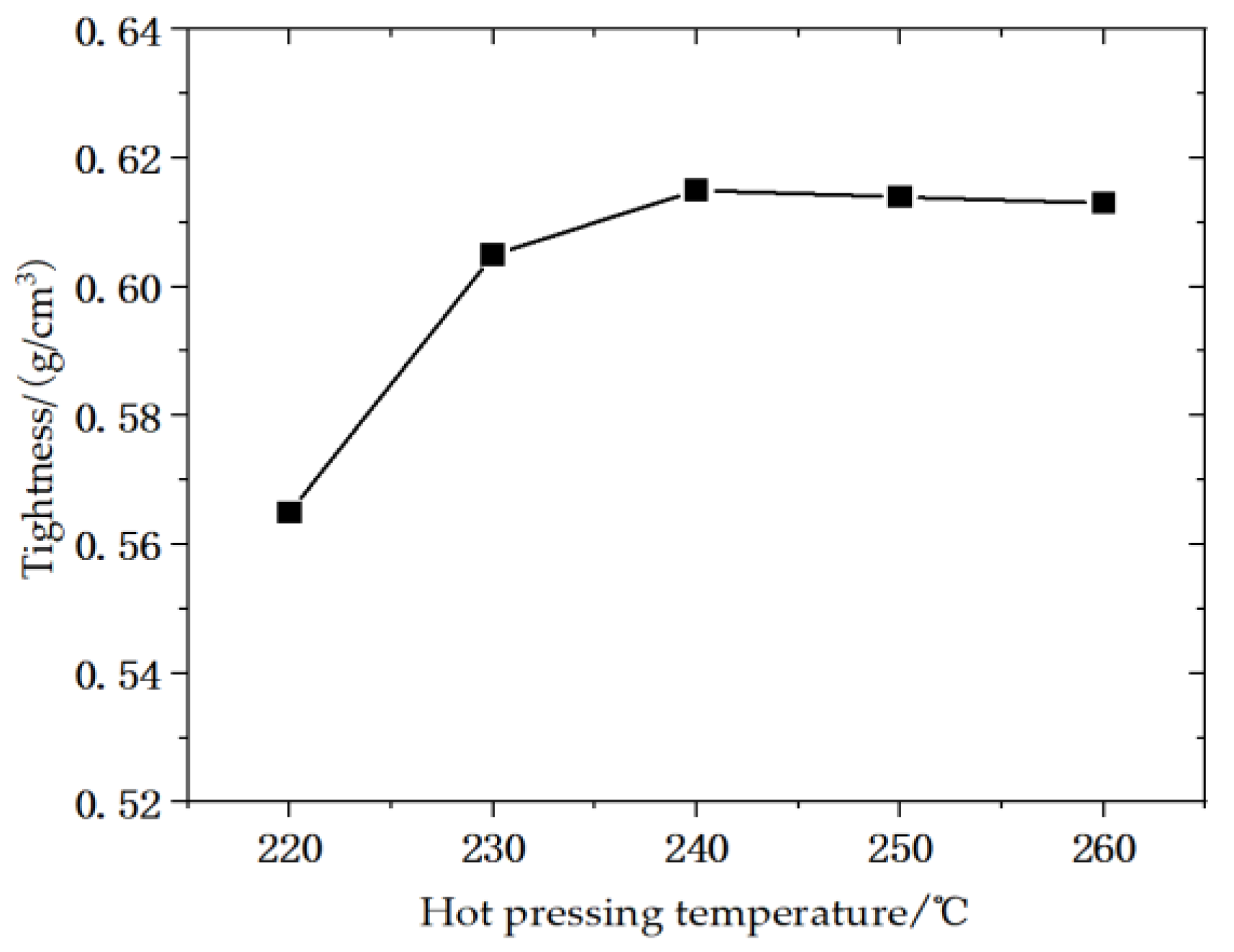
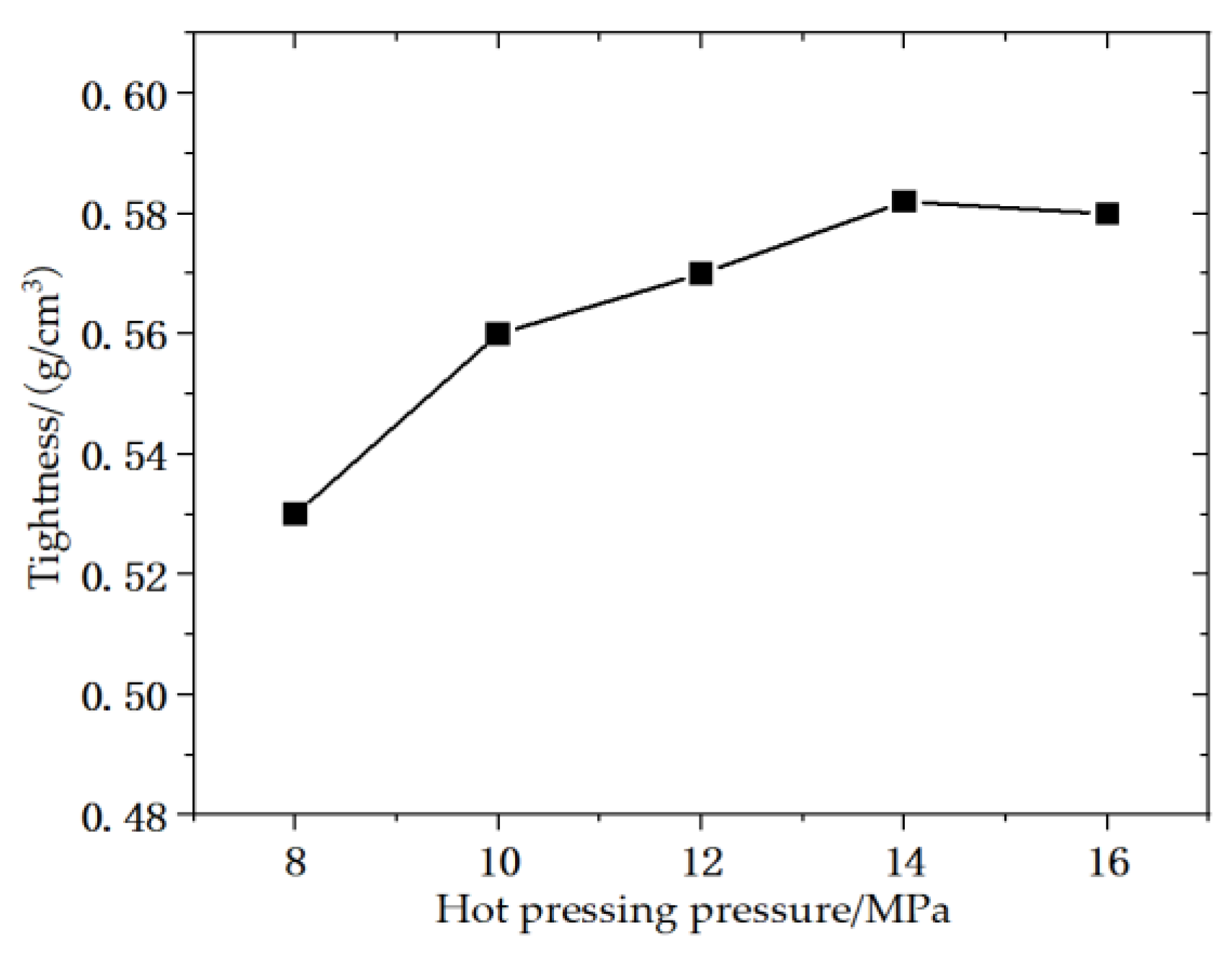

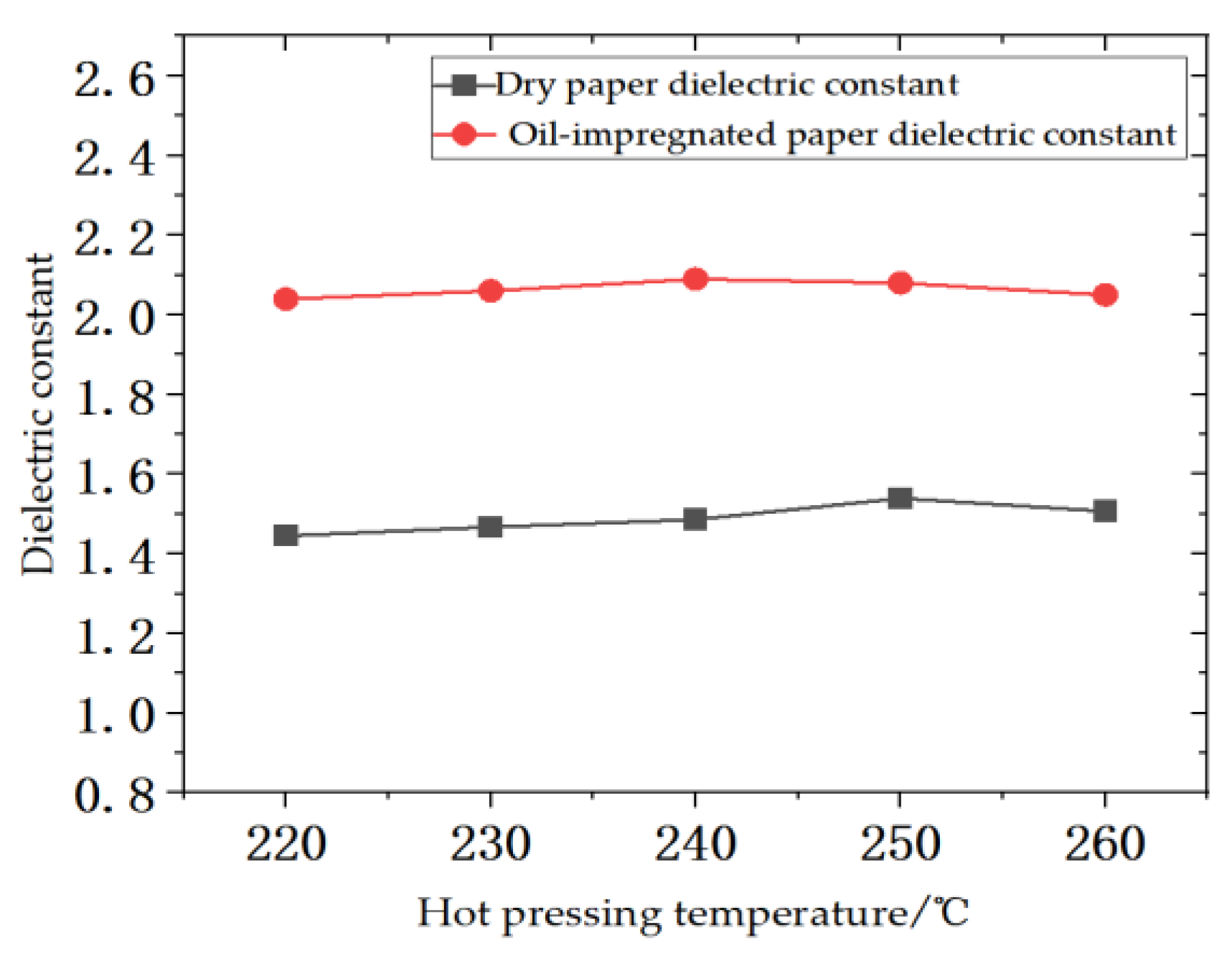
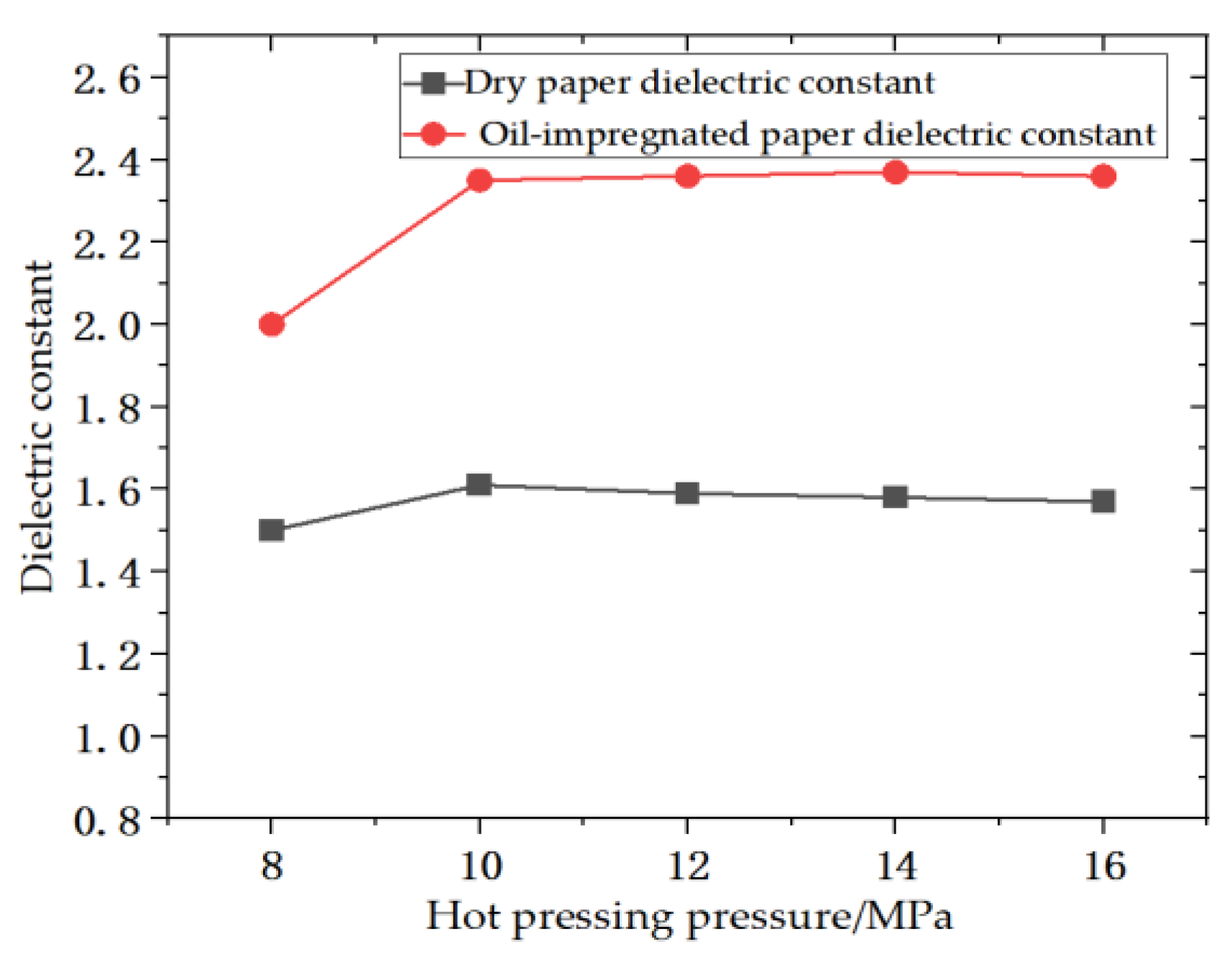



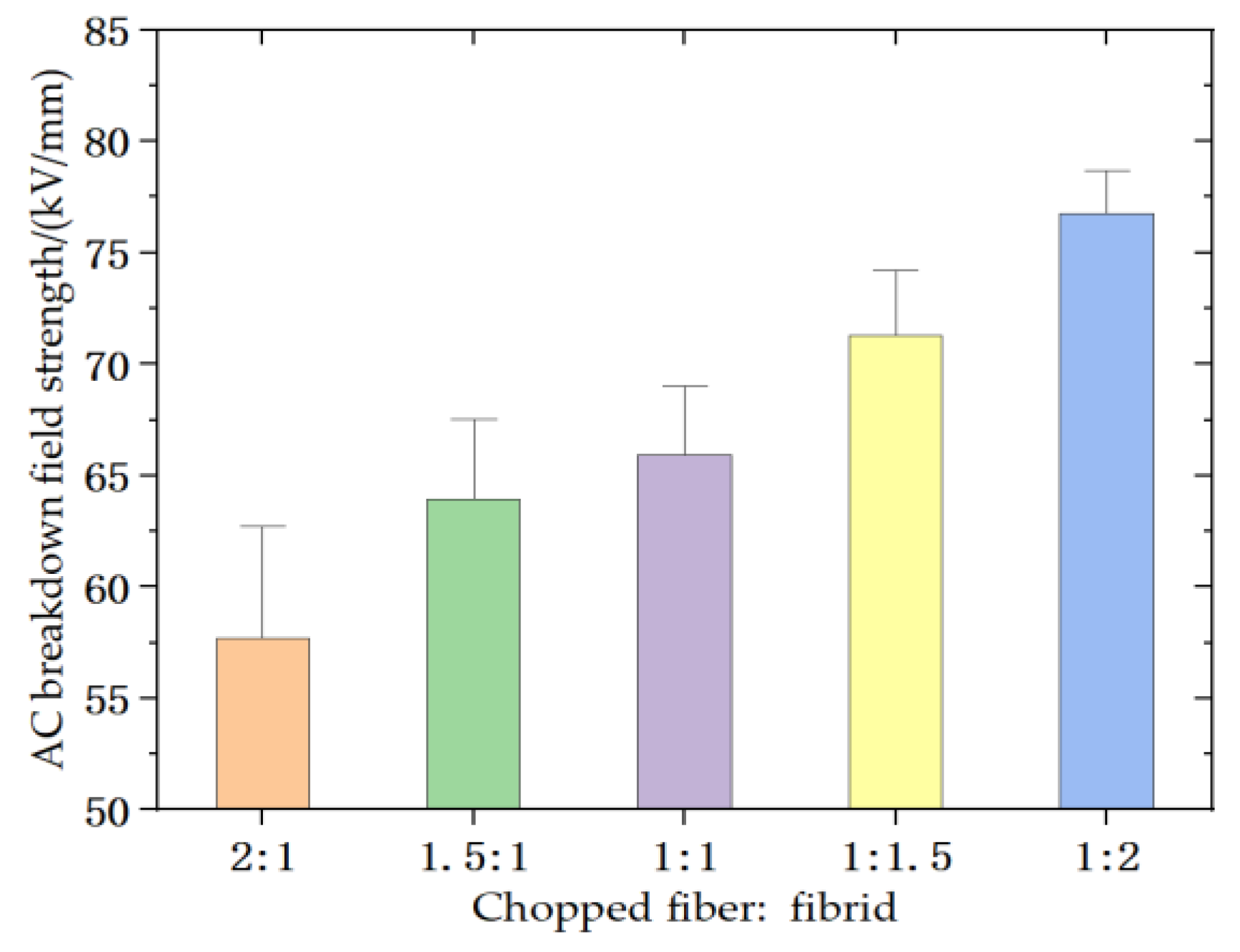
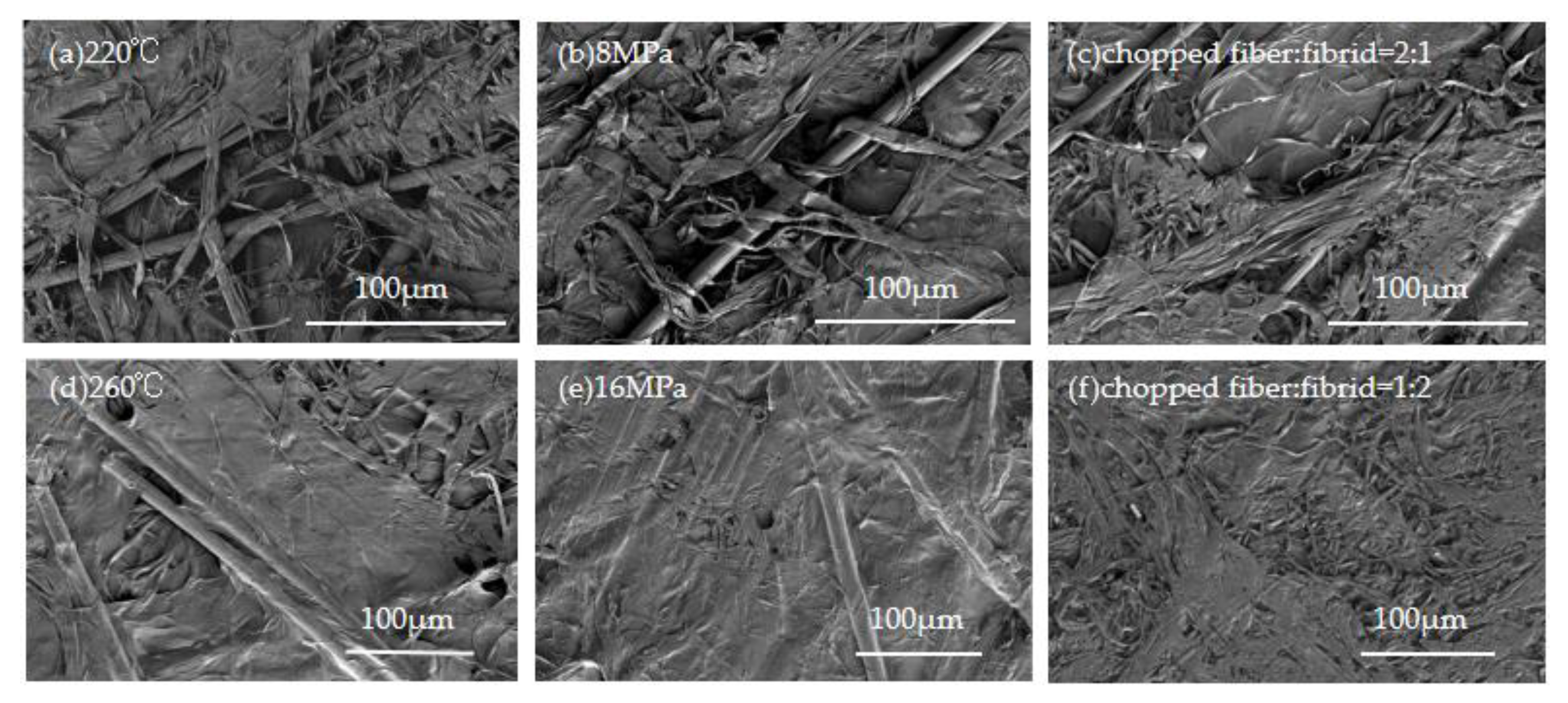
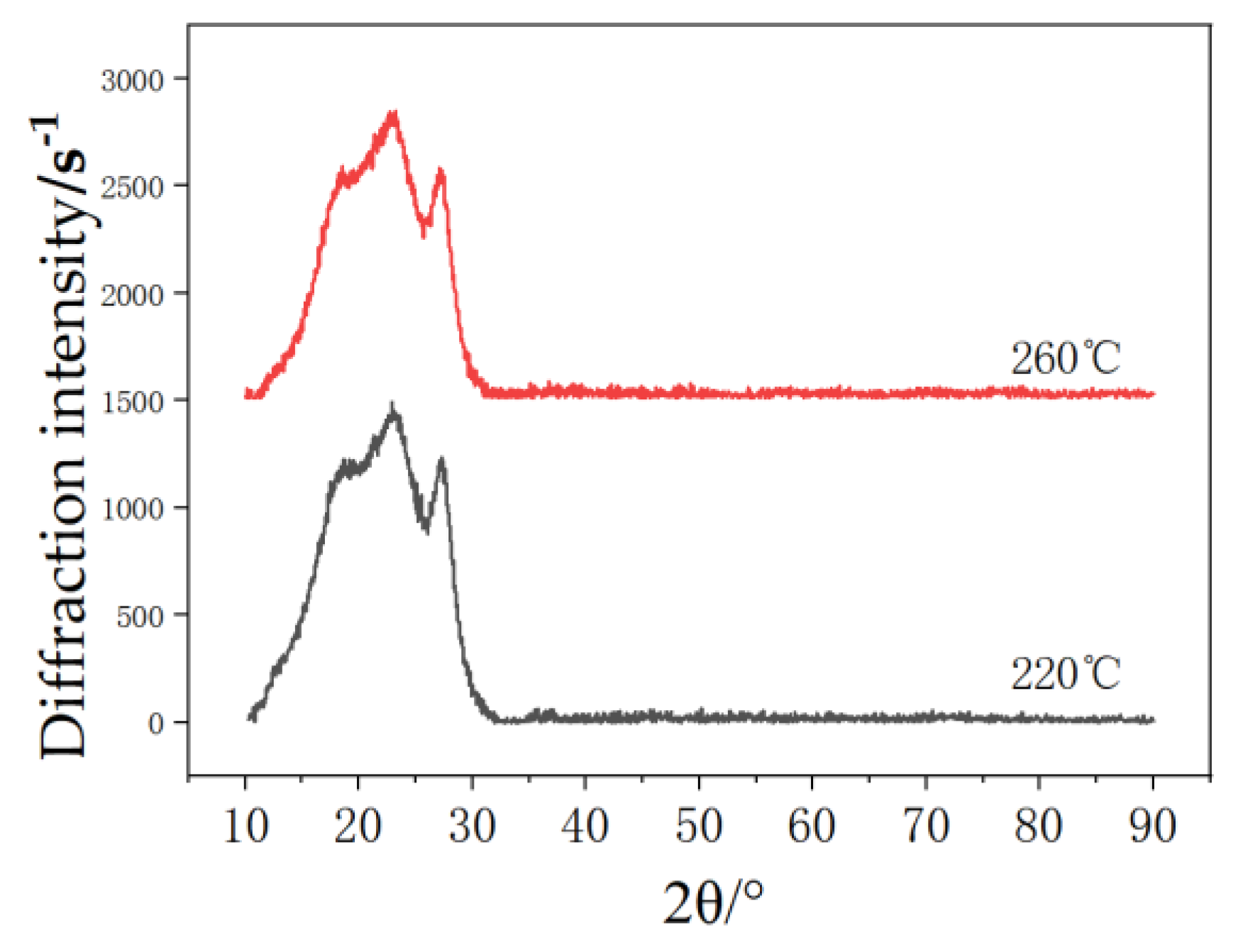
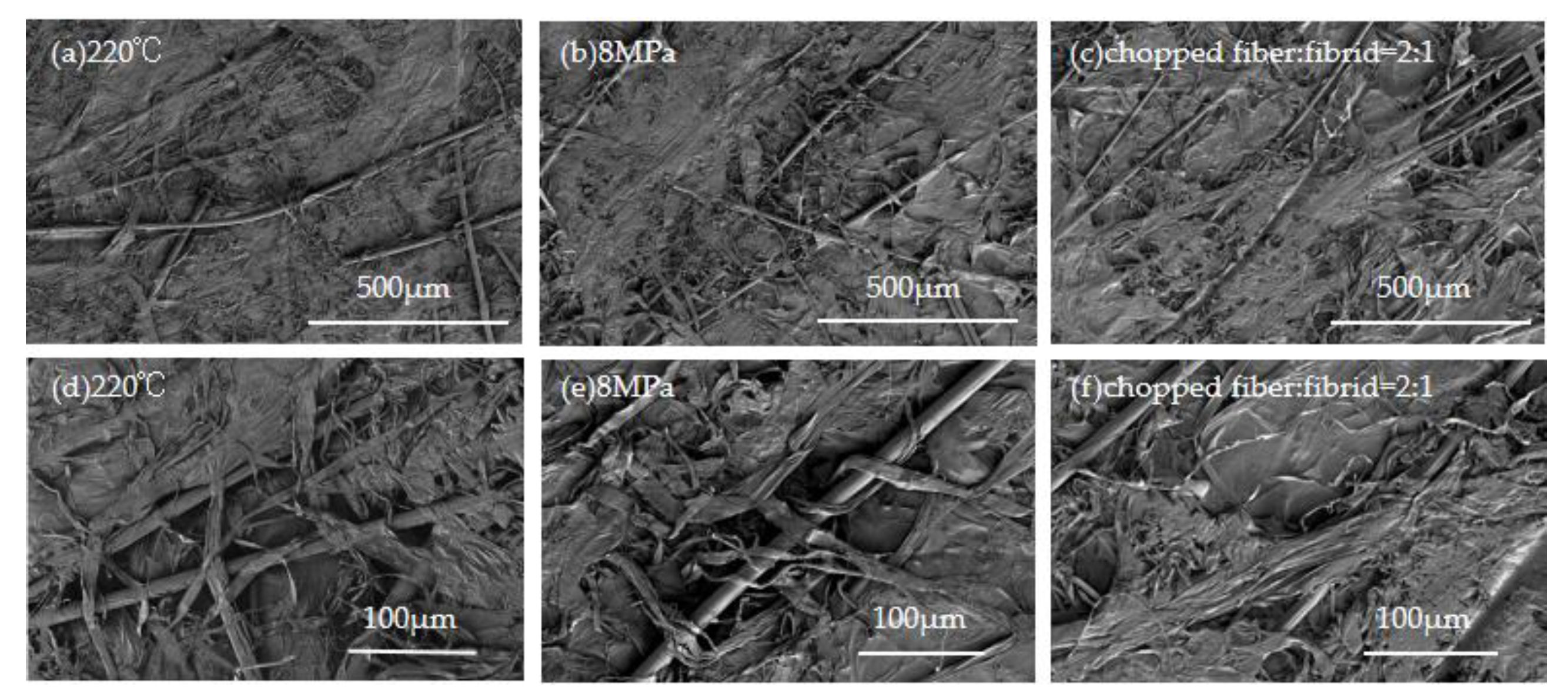
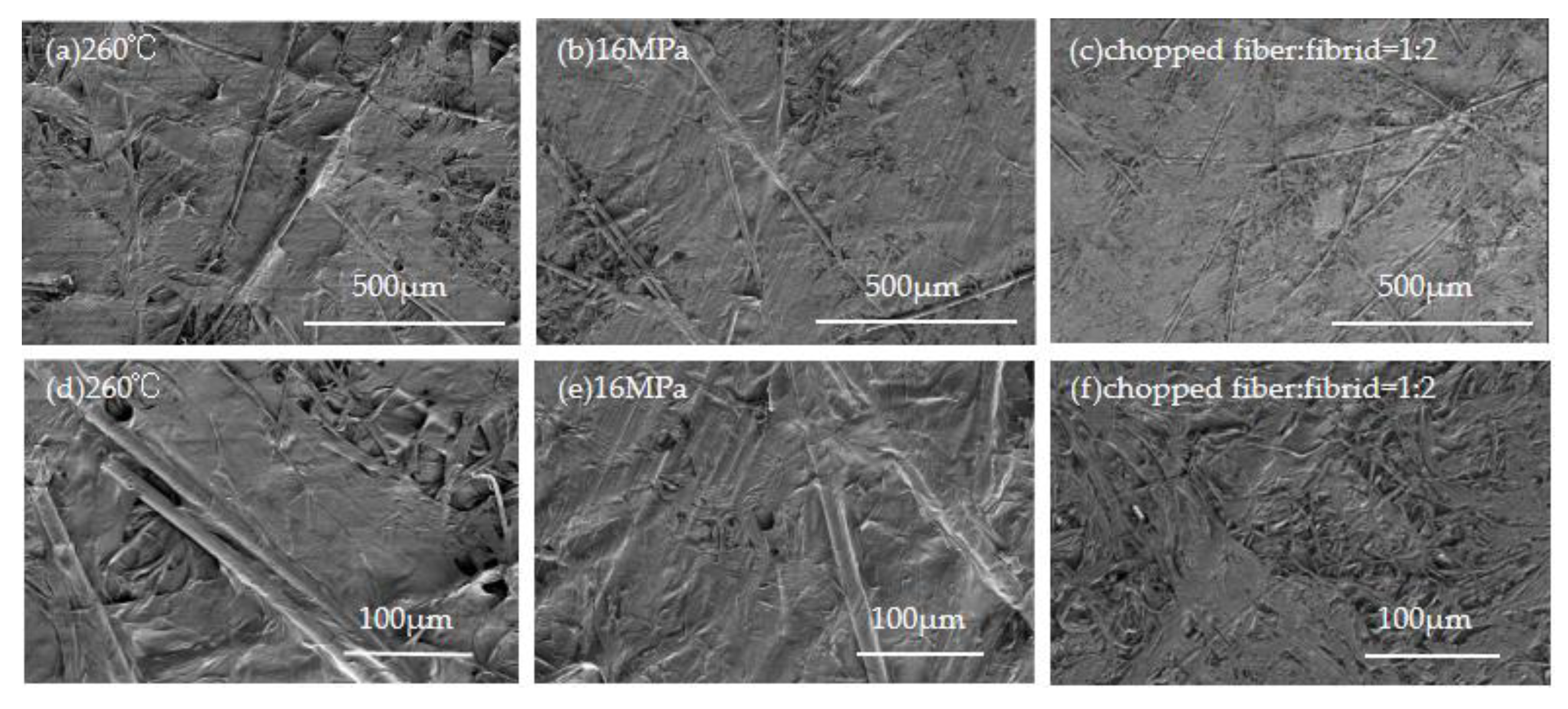
Publisher’s Note: MDPI stays neutral with regard to jurisdictional claims in published maps and institutional affiliations. |
© 2022 by the authors. Licensee MDPI, Basel, Switzerland. This article is an open access article distributed under the terms and conditions of the Creative Commons Attribution (CC BY) license (https://creativecommons.org/licenses/by/4.0/).
Share and Cite
Yao, Y.; Huang, M.; Ma, J.; Su, Y.; Shi, S.; Wang, C. Effects of Hot Pressing Temperature and Pressure on Dielectric Properties of Aramid Insulating Paper. Energies 2022, 15, 8314. https://doi.org/10.3390/en15218314
Yao Y, Huang M, Ma J, Su Y, Shi S, Wang C. Effects of Hot Pressing Temperature and Pressure on Dielectric Properties of Aramid Insulating Paper. Energies. 2022; 15(21):8314. https://doi.org/10.3390/en15218314
Chicago/Turabian StyleYao, Yuanxin, Meng Huang, Jie Ma, Yanxiao Su, Sheng Shi, and Chunhe Wang. 2022. "Effects of Hot Pressing Temperature and Pressure on Dielectric Properties of Aramid Insulating Paper" Energies 15, no. 21: 8314. https://doi.org/10.3390/en15218314
APA StyleYao, Y., Huang, M., Ma, J., Su, Y., Shi, S., & Wang, C. (2022). Effects of Hot Pressing Temperature and Pressure on Dielectric Properties of Aramid Insulating Paper. Energies, 15(21), 8314. https://doi.org/10.3390/en15218314





